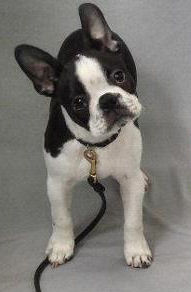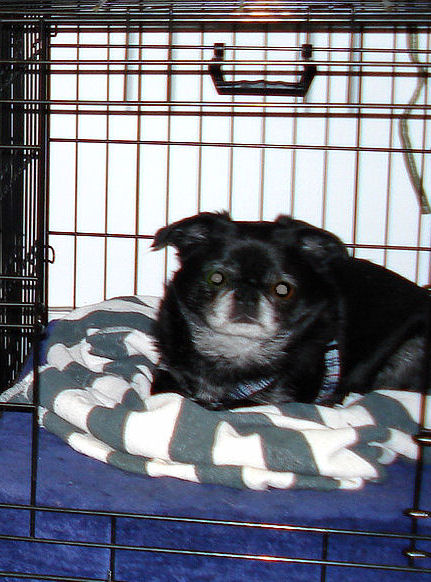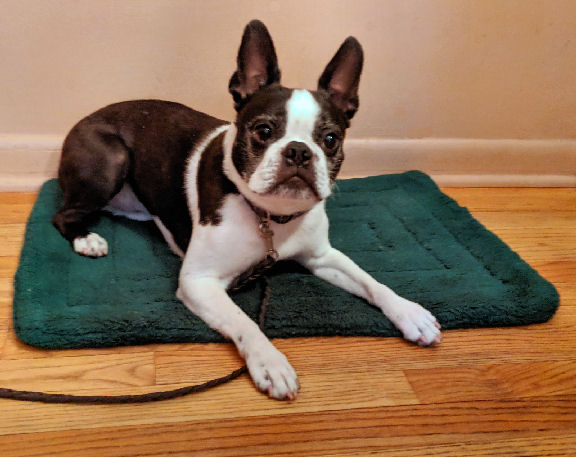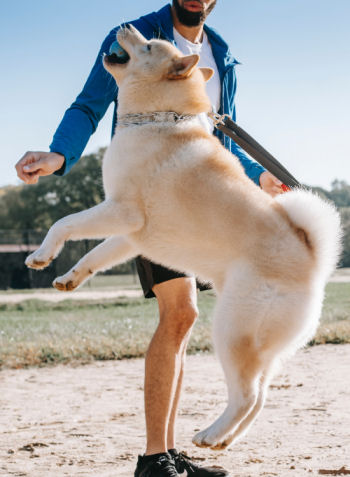Dog training collars don’t exist. There is no object that can train your dog. You’re the only training gear you and your dog really need.
Traditionally, choke-chain and prong collars were considered training collars. Then came the invention of electronic collars. All of these are threats of punishment, not trainers. You don’t need one to control your dog.
Real training gear
What your dog wears for your training games doesn’t matter. It can be a regular buckle collar, a harness, or nothing at all. Dog training isn’t ever about the “stuff” – although heaven knows we’ve managed to accumulate tons of stuff. It’s about your relationship with your dog. Having fun. Playing games. Building understanding. And growing your bond.
The gear you need is intangible: patience, adaptability, observation, a sense of humor. It’s being willing to pay attention to your dog and the signals he/she gives you. And the ability to try something else when what you’re doing isn’t working.
Collars have their uses

When you begin playing training games with your dog, a collar or harness may be useful. You may need to attach a leash to keep your dog in the vicinity at first. We recommend at least a six-foot leash. And all you do is attach it and step on the end to keep the dog relatively close.
Until your dog understands that training games are a fun zone, he/she may attempt to disengage. Remember, depending on what kind of training you’ve experienced in the past, your dog may expect to be corrected or punished for “wrong” answers. To avoid that, your dog may attempt to disengage and leave the area.
In 2-Minute Training games there’s no such thing as punishment. Reward what you like, ignore what you don’t. It will take a while for your dog to understand they can try all kinds of stuff. (We talked about one of Simon’s long-awaited breakthroughs in our article “Stay positive in dog training – results come in time.”) It may not be exactly right, but that’s okay. We just try again.
Naked games
Our dogs, who wear nothing in the house, adore playing training games. When we open the door to the basement where we have our little training area, they all barrel down as fast as they can go. They sometimes try to sneak down if we’ve left the door ajar accidentally.
We love and encourage that enthusiasm. Our morning training games are the best way to start the day – having fun with our dogs. And if a particular game doesn’t go the way we wanted it to, there’s always another opportunity.
Recently, Hope decided to start teaching Torque the Utility Obedience glove retrieve. That exercise has three evenly-spaced work gloves at one end of the room. The judge decides which glove (left, center, or right) the dog must fetch and bring back to the owner. If your dog has a fetch behavior, it seems simple enough.
We learned quickly that it’s more complex than that. Torque was stumped. He had no idea what to do with the gloves – he’d never seen them before. With 2-Minute Training games, we easily adapted and took it back to basics.
Torque’s next game was just getting familiar with work gloves. Hope put them on the floor and sat close by. Torque got a click and reward for any interaction with the gloves. Looking at them. Pawing at them. Moving them. After three clicks at each stage, Hope waited for Torque to do something else. Within just a couple of minutes, when putting a paw on the glove no longer got him a click, he moved on to mouthing them, picking them up, even carrying them a step or two.
Clothes don’t make the dog
Even though he didn’t get it “right” – Torque stayed right with the game because he’s not afraid to try new things. That’s because he’s never been punished with a dog training collar, or anything else.He plays naked, as do all our dogs. He stays and plays because he loves it, not because he’s compelled.
Don’t diminish your dog’s spirit with the constant fear of being wrong. You want your dog engaged, happy, learning new things, and eager to participate in training games. It’s such a joy to see dogs fulfilling their potential, making good choices, engaging with their families. Being the family member you dreamed of when you got your dog.



